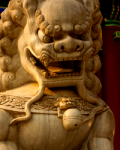-
Fine print of China-Australia FTA still an unknown
June 15, 2015
THE devil is in the detail. Lawyer Jim Harrowell, Chairman of the Australia China Business Council, says the focus of the China-Australia FTA in terms of services seems to be on the Shanghai Free Trade Zone – and no-one yet knows just what the benefits will be. But he says farmers and more broadly regional Australia should benefit . . .





